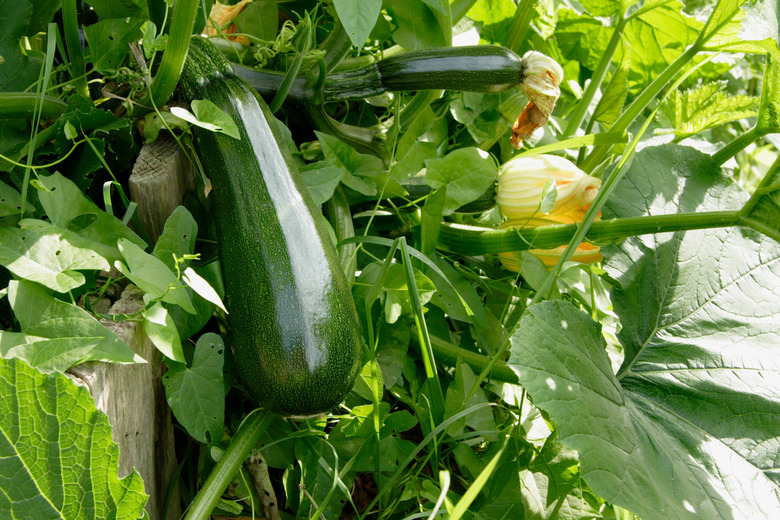Will Too Much Water Cause Zucchini Leaves To Turn Yellow?
We may receive a commission on purchases made from links.
Yellowing leaves, due to a condition known as chlorosis, can occur in zucchini (Cucurbita pepo) for several reasons, including too much water. Learn how much water zucchini plants need to correct this issue once the soil dries out. If overwatering doesn't seem to be the problem after all, the leaves may be turning yellow due to a nutrient deficiency in the soil, a pest infestation or a viral or fungal infection.
Tip
Overwatering and several other factors can cause zucchini leaves to turn yellow.
Overwatering and Yellowing Leaves
Overwatering and Yellowing Leaves
Overwatering can lead to yellowing leaves because it actually leads to less water intake and a nutrient deficiency. Without proper nutrients, the plant cannot make more chloroplasts, which contain the green pigment chlorophyll. As a result, the leaves lose their green color and reveal their secondary yellow color.
It all starts with the roots, which not only absorb water but also take in oxygen from tiny air pockets in the soil. When there's too much water in the soil, it "plugs" these air pockets and leaves no room for oxygen. Oxygen is vital to many processes in plant development, including new root growth and water intake.
When the plant cannot grow new roots or take in enough water, the flow of nutrients grinds to a halt. Plants have a limited ability to send nutrients from the leaves to nutrient-deficient areas, but they cannot survive for long with this nutrient reorganization. By the time chlorosis occurs, the plant's roots have been drowning for a while.
Other Causes of Yellow Leaves
Other Causes of Yellow Leaves
Zucchini leaves will also turn yellow due to nutrient deficiencies that aren't caused by overwatering. Iron, zinc and manganese deficiencies are those most commonly linked to chlorosis. With manganese and zinc deficiencies, chlorosis first appears in older leaves as the plant tries to move these nutrients to newer plant growth. However, iron deficiency can be diagnosed when chlorosis occurs in young foliage first.
If the yellowing appears mottled instead of uniform, the issue could be related to the feeding activity of pests, like spider mites, aphids and squash vine borers; viruses, like the squash mosaic virus; and fungal infections, like powdery mildew, downy mildew and fusarium wilt.
Fixing Yellow Leaves in Zucchini
Fixing Yellow Leaves in Zucchini
If you suspect your zucchini is suffering from saturated soil, the only thing you can do is wait for the soil to dry out. Zucchinis are definitely thirsty plants, but they develop a long tap root to help them soak up moisture even during dry spells. One inch of water each week — whether through rain or irrigation — is sufficient to keep a mature zucchini plant hydrated. Do not get the leaves wet when you water zucchini, as this can encourage fungal infections on the leaves.
Test a soil sample to detect a nutrient deficiency or imbalance and apply the nutrient in the form of a liquid fertilizer to quickly correct the issue.
Yellow leaves caused by pests, viruses or fungi require a more serious intervention. Squash vine borers should be extracted by hand to prevent additional damage. Spider mites, aphids and fungal infections can be controlled with neem oil. Squash mosaic virus has no cure.
